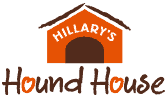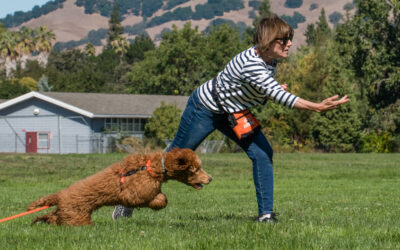
It is important in multi-dog households that each puppy or dog has a quiet place of his own (more on this in another chapter). Puppies and even dogs can easily become competitive for attention, food, treats, toys, even formerly unimportant items can become the focus of contention. In fact, wherever there is competition (among people or animals) you’ll find members of a household barging in on each other, creating an unfriendly push/pull dynamic that can frighten a puppy and lead to unintended consequences.
The safest way to have several dogs in a home, particularly with a puppy is to have them in separate spaces, something akin to a gated community. This will also help your puppy avoid mimicking the habits of older dogs like barking at delivery people, roughhousing, jumping on visitors, counter surfing. This is social learning at its least finest. In fact puppies are particularly prone to copying everything an older dog does.
“Like all babies, puppies are excellent mimics. I see it every day in the Nursery. If one puppy jumps, they’re all airborne. If one barks, it’s a chorus of sounds.”
Like all babies, puppies are excellent mimics. I see it every day in the Nursery. If one puppy jumps, they are all airborne. If one barks, it’s a chorus of sounds. Everything becomes a group effort with puppies trying to outdo each other – especially when over-stimulated. This ability to mimic other dogs is what makes this gregarious species so successful in groups. Which gives extra credence to the importance of controlling your puppy’s environment from the beginning – even separating a new puppy from the other dogs in your home. So much for the old saw about learning from an older dog. Believe me, it’s not all it’s cracked up to be.
“So much for the old saw about learning from an older dog. Believe me, it’s not all it’s cracked up to be.”
Many people like the idea of an older dog teaching a puppy and this frequently has unintended consequences. In fact, you probably won’t like the conclusions your puppy draws from an older dog’s behavior.
Years ago one of our families had an older dog that barked nonstop when delivery people arrived on her doorstep. Suddenly her puppy was barking too, and something she’d learned to ignore suddenly became intolerable.
“What do you do when your older dog is teaching your puppy bad habits? In this case we taught her puppy to come find her when her other dog barked.”
What do you do when your older dog is teaching your puppy bad habits? In this case we taught her puppy to come find her when her other dog barked. She started with her puppy on a leash and when the other dog barked, she urged her puppy to run to her. Before long both the puppy and her dog were running to her for a treat when the delivery person appeared. This gave her time to put them in another room before answering the door.
Personally and professionally, I would never burden an older dog with the education of a puppy. Even if that dog had impeccable manners, social skills, and attentiveness bordering on perfection. Ok, I’m being ironic here. Truth be told I’d rather have exactly what I want in a puppy and ensure the training experience is a good fit for a puppy’s level of confidence and development. In sum, when we allow a puppy to adopt new behaviors without curating the experience, we seldom get exactly what we want.
“In sum, when we allow a puppy to adopt new behaviors without curating the experience, we seldom get exactly what we want.”
Take for example an older dog that is fearful or hesitant around strange dogs and barks or lunges at them. In no time your puppy will adopt those behaviors without examination or hesitation. He will assume that is how the world is. Worse still, he would absorb the other dog’s lack of confidence and anxiety before you’ve had a chance to help him develop his own abilities and discover the world on his own. It’s a lot to leave to chance.
Think: Loose Dogs, Loose Cannons
Having gated spaces, much like gated communities will help to create a quieter home that is safer for youngsters while the older members of the family have more freedom and access to the comings and goings in your life.



